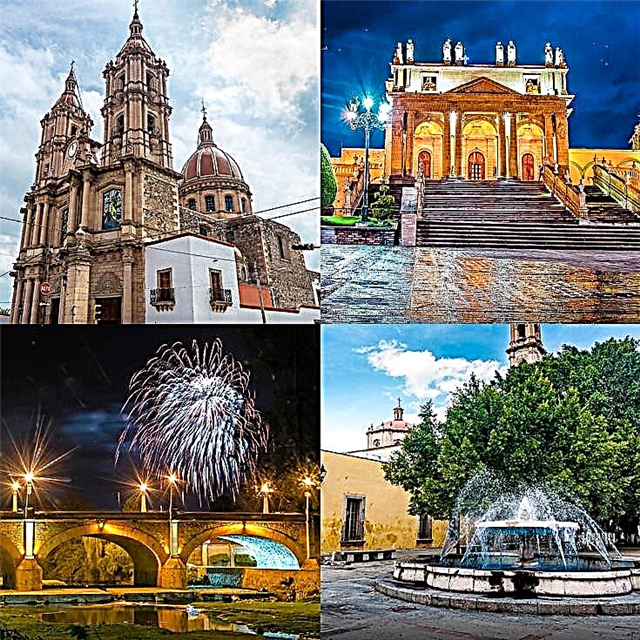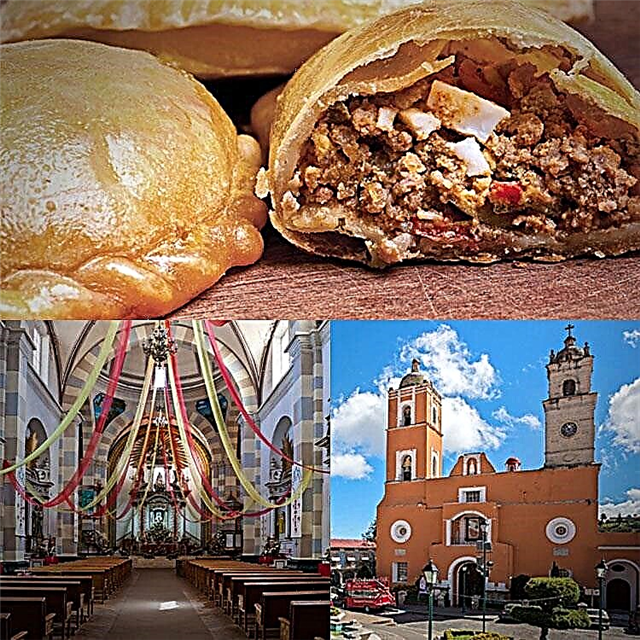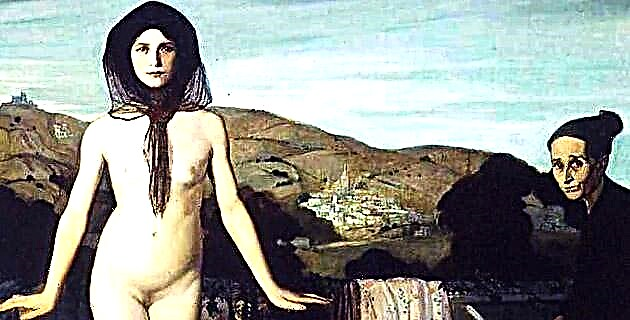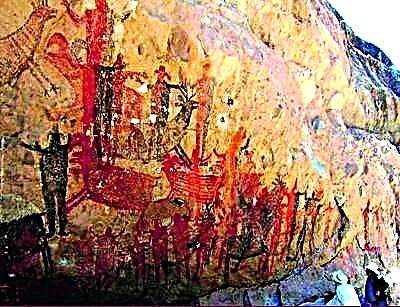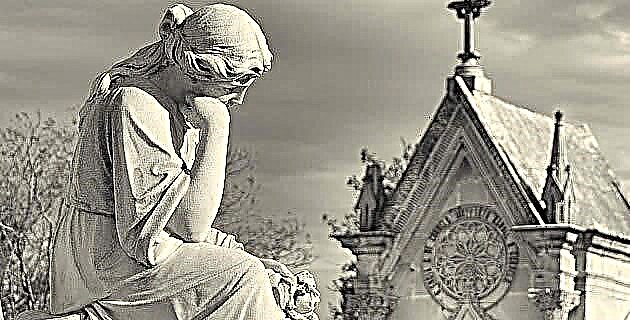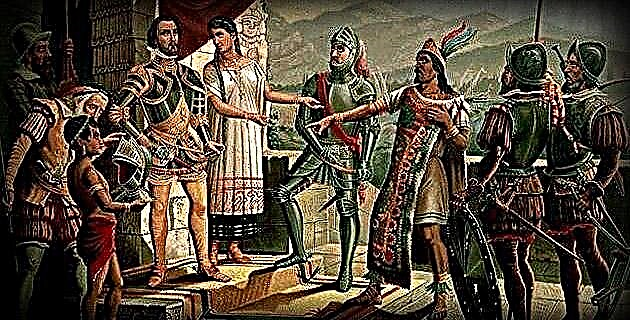
In the northern part of Baja California Sur is the Sierra de San Francisco, a place where you will find cave paintings. Discover them!
In the northern region of the state of Baja California Sur there is the Sierra de San Francisco, site where one of the nuclei of paintings that abound throughout this area.
This is where, with relative ease, you can enjoy a great variety of murals cave which are still in very good condition. The interest of a visit to such a remote place does not lie only in the cultural and historical aspect of these magnificent ancient representations, but also in immersing yourself in a territory whose landscape and life seem as inhospitable as it is peacefully beautiful.
San Francisco de la Sierra is 37 km from highway number one in Baja California and 80 km from the town of San Ignacio. There you can find the recently opened Local Museum of San Ignacio and the National Institute of Anthropology and History (INAH), where the necessary permits are granted to visit the Sierra de San Francisco and preparations are organized to get the guide and the animals necessary to visit the region. The museum, from which I obtained most of the information for this report, is the culmination of a work that has been carried out for several years on the cave murals and the lives of their executors. It displays various photographs of paintings and the area, and provides the latest information on archaeological projects that are being carried out today. It also contains a three-dimensional representation, to scale, of one of the murals in the sierra, through which it is possible to visualize the original appearance of the paintings during the lifetime of their authors. It is advisable to visit this museum to better understand the area before embarking on the journey.
Leaving from San Ignacio with the necessary permission, it is recommended to use your own vehicle since there is no public transport to San Francisco, and hiring a private one can be quite expensive. The road to San Francisco is not paved and is often in difficult conditions after the rains, so it is advisable to use a car suitable for this type of terrain.
The gradual change from the desert plains to the sierra is beautiful. During the ascent it is possible to see the great valley of the Vizcaíno that extends to the great salt flats, next to the Pacific Ocean. A little further on, from the heights, you can see a blue strip that is the Sea of Cortez.
The small town of San Francisco is the last place to buy groceries, but it is advisable to do this in San Ignacio for reasons of price and assortment. It is essential to bring bottled water as it is risky to drink the water that runs through the few streams.
Once in San Francisco, mounted on a mule, the calm ascent and descent of the canyons begins towards the heart of the mountains where the paintings are located. This series of mountain ranges is part of the area known as the Central Desert. The road constantly changes, alternating between plains, plateaus, ravines and ravines. The vegetation, formed mainly by a great variety of cacti, changes in a very interesting way when one reaches the bottom of the ravines where there is a very different flora that enjoys the water of the intermittent streams. Here, the palm trees lustfully narrow towards the abundant sun and different trees and shrubs can be seen that take advantage of the little water that exists.
After five hours of walking you reach the San Gregorio Ranch where two friendly and nice families live. During their long stay there, they have developed a complex irrigation system with which they have created beautiful vegetables that give a pleasant asylum to tired eyes from the constant desert landscape. You can hear the water running through the various channels and smell the damp earth. As you stroll, you can see orange, apple, peach, mango, pomegranate and fig trees. There are also all kinds of grains and legumes.
The further I went into the mountains and as I discovered the murals, I tried to imagine what the lives of those mysterious inhabitants would be like, who left an indelible mark on their vision of the world. In a way, the beauty of this place and its incredible nature explained to me, with their silence, the respect and contact that the ancient inhabitants must have had with their environment and that they reflected with so much effort in their impressive paintings.
THE BEGINNING
This territory was inhabited by people of the Cochimí language, belonging to the Yumana family. They were organized in bands that were made up of 20 to 50 families and together they added between 50 and 200 members. Women and children were engaged in gathering edible plants and men primarily in hunting. The leadership of the group resided in an elderly man, the cacique, although women had an important role in the family and marriage organization. There was also a shaman or guama who directed the ceremonies and rites of the tribe. Often the cacique and the shaman were the same person. In the rigors of winter and spring, the settlements of a region dispersed to make better use of scarce resources, and when these were abundant and water reserves increased, tribes congregated to develop various subsistence activities, ceremonials and rituals.
Despite the fact that the mountains may seem an inhospitable environment, the variety of geographical areas it contains configured an ideal environment for the development of a great diversity of animal and plant species, which allowed the settlement of nomadic groups from the north that remained there. until the arrival of the Jesuit missionaries, at the end of the 17th century. These groups were dedicated to hunting, gathering and fishing, and had to move through the different geographical areas according to an annual biological cycle, to search for food, raw materials and water. Therefore, the appropriation of the necessary resources for their survival required a deep knowledge of the environment that would allow them to know what was the most propitious season to inhabit a certain area.
THE RUPESTRES PAINTINGS
Through various analyzes of the finds, including the pigment in the paintings, it is estimated that the area was inhabited for 10,000 years and that the custom of painting on the rock began 4,000 years ago and continued until 1650, when it ended. by the arrival of Spanish missionaries. It is extremely interesting that the style of painting has not undergone major changes in such a long time.
Throughout the region These cave paintings represent a great variety of figures of both terrestrial and marine animals, and also human figures. Also diverse are the shapes, sizes, colors, and their juxtaposition. Land animals, represented in fixed and moving positions, include snakes, hares, birds, pumas, deer, and sheep. You can also see various representations of marine life such as whales, turtles, manta rays, sea lions and fish. When animals form the central representation of a mural, human figures are secondary and appear sporadically in the background.
When the human figures are central they lie in a static position and face forward, with the feet pointing downwards and outwards, the arms extended upwards and the heads are faceless.
The female figures that appear, can be distinguished because they have "breasts" under the armpits. In addition, some of them are adorned with what the first Jesuits recognized as the plume rituals used by the chiefs and shamans of the groups. The superposition of the figures indicates that the murals were successively composed on different occasions.
THE ELABORATION OF THE RUPESTRES PAINTS
It is possible that the seasonal gathering (which occurred in the rainy season, late summer and early fall, and was when the guamas led the ceremonies and rituals of the community), was the most obvious and appropriate time for the production of the images, which played a key role in the life of the group, and which fostered its cohesion, reproduction and balance. Also, given their close relationship with nature, it is very likely that rock art also meant for them a way of expressing their understanding of the world in which they lived.
The monumental and public scale of the murals, as well as the elevated position in the rocky shelters in which some of them are painted, speaks to us of the cooperation and collective effort of the tribe to carry out various tasks, from the achievement of pigments and the construction of the scaffolding, up to the execution of the paintings. It is very likely that these works were done under the direction and supervision of the shaman, as is the case among hunter-gatherer groups in the United States.
The magnitude of the cave paintings in this area of the state of Baja California Sur represents a phenomenon with a level of complexity rarely encountered between hunter-gatherer societies. For this reason, in recognition of the enormous cultural heritage found here, in December 1993, UNESCO declared the Sierra de San Francisco a World Heritage Site.
IF YOU GO TO SAN IGNACIO
You can get there from Ensenada or from Loreto. Both routes are made by highway number 1 (transpeninsular) A: one to the south and the other to the north. The time from Ensenada is approximately 10 hours and from Loreto a little less.
In San Ignacio there is the museum and you can find where to eat, but there is no lodging, so we remind you to be well prepared.
On the other hand, it is on this site where you will find the means to organize your expedition.
If you arrive in La Paz, in the article there is a note of who to turn to to organize the trip.

